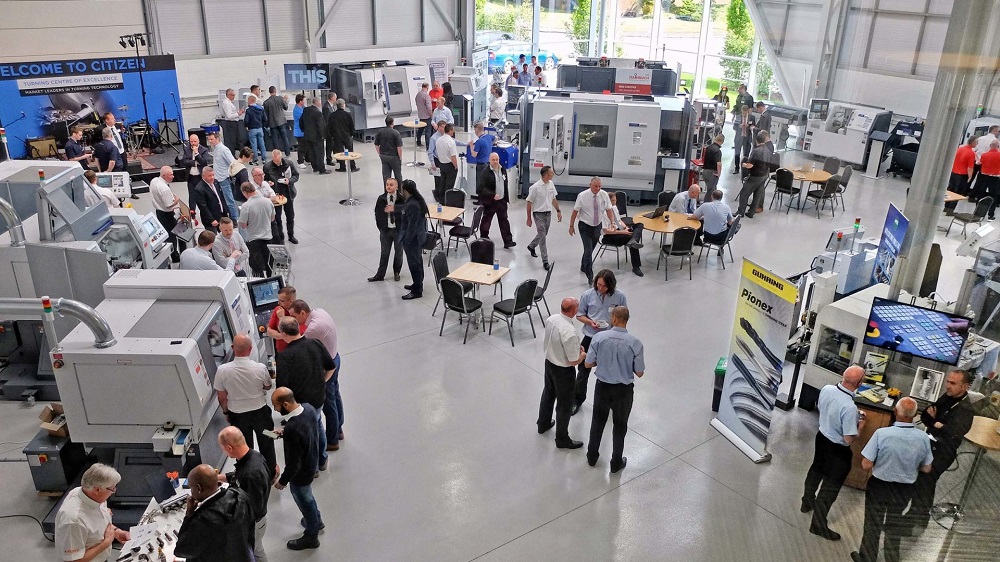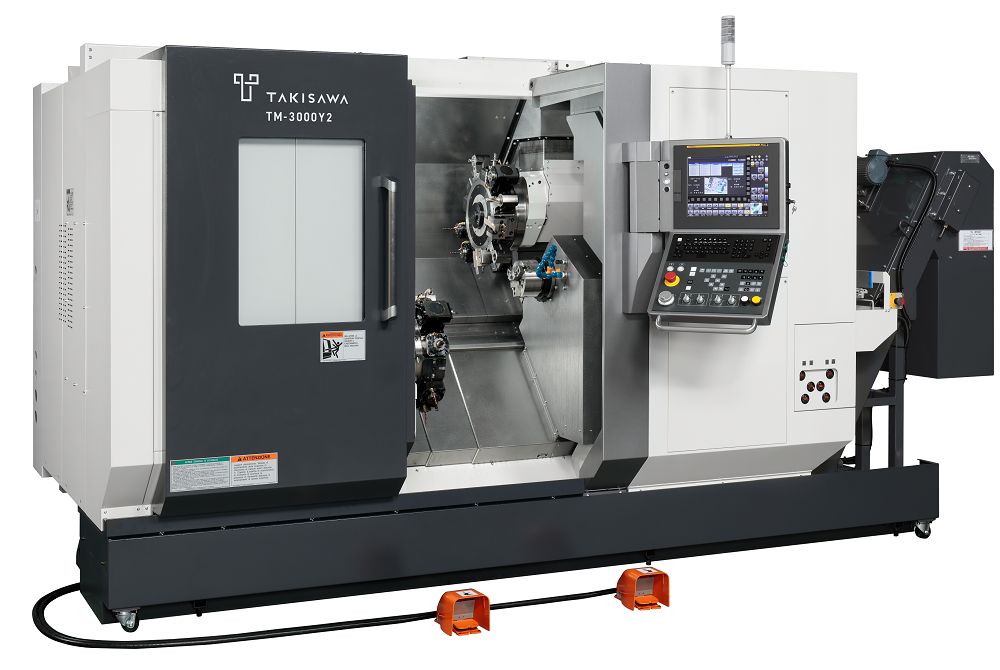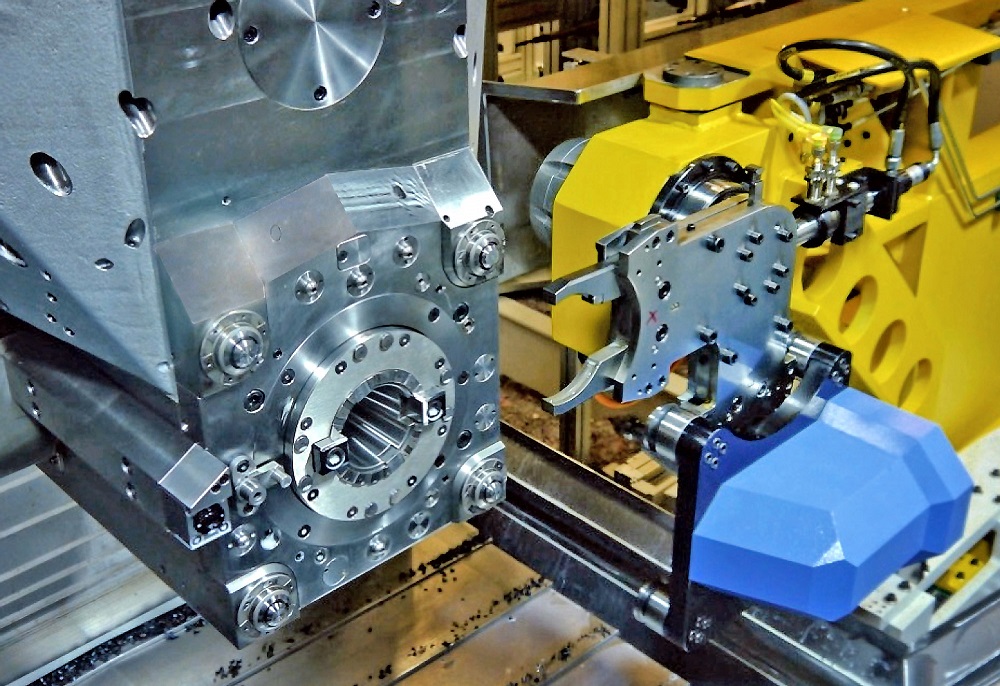A spectacular display of innovations, high levels of visitor interest from all over the world, and a great atmosphere in the halls. “After the four-year break, the relaunch has been a huge success for EMO in Hanover,” sums up the show’s commissioner general Carl Martin Welcker after six highly eventful days. Its strengths included the internationality of the exhibitors and visitors, with the fair once again providing a platform for notable technical innovations.
“We saw everything here for the future of production: new solutions for automation, for networking within the factory and for sustainable production. When digitalisation finds its way into the factory, there’s no end to the potential for new innovations and increased efficiency,” says Welcker. “And there was a positive mood at the event, despite the tense economic situation.”
Around 1850 exhibitors attended, with roughly 70% coming from 45 different countries, including China, Italy, Taiwan, Switzerland and Japan. Of the approximately 92,000 trade visitors, 54% came from outside Germany (some 130 countries). Here, the five largest visitor countries were Turkey, China, Netherlands, Italy and Poland. Around 33% of trade visitors came from Asia.
Günter Szerenczés, board member of Israeli tool manufacturer Iscar, says: “EMO is once again a triumph, attracting a highly international audience from a wide range of industries. Visitors have been specifically asking about new innovations.”
The visitor survey reveals that 30% of visitors cited “obtaining information about innovations and trends” as their top priority. A further goal was finding concrete solutions for their specific problems.
Dr Jochen Kress, managing partner at tooling specialist Mapal, says: “The main focus of the discussions we’ve been having is on customer-specific aspects. And EMO is the right platform for strengthening the co-operation between customers and suppliers.” Dr Matthias Klein, CSO of machine tool builder Emag, adds: “We saw an overwhelming level of interest in our innovative solutions, in particular those for machining electric vehicle powertrain components. Overall, we’re more than satisfied with the response from the market.”
The shortage of skilled workers was a further reason why automation was a clear focus of the trade fair. Over one-third of visitors cited this as a key issue for the industry. Almost a quarter mentioned digitalisation and networking.
Several hundred robots were on display at EMO. A new aspect is that it is no longer necessary to have programming skills in order to use collaborative robots (cobots) for different applications such as loading and unloading, quality control, painting and washing, for example. Connecting to measuring devices was a further trend at the show. Cobots are equipped with sensors that mimic the human sense of touch, allowing them to compensate for components tolerances or working around obstacles in the workspace. In collaboration with employees, this capability facilitates enclosure-free operation, for example.
“Cobots are continuing to enjoy rising popularity in manufacturing, especially in smaller companies that are now struggling to find staff,” says Nils Tersteegen, marketing manager at FANUC.
Machine connectivity was a big topic at the show, with the main emphasis on the open exchange of data – based on OPC UA, for example. This is the basis for the ‘Companion Specification OPC UA for Machine Tools’ under the umati umbrella. Retrieving large amounts of data from digital controls without affecting the process is a key factor here. The availability of transparent process data is crucial for process monitoring and related quality management.
The future of sustainability in production was high on the agenda for 68% of visitors. Visitors from outside Germany accounted for three quarters of this group. A key aspect was efficiency. Some examples: the ‘Product Carbon Footprint’ indicates the level of carbon emissions during production and provides detailed information on what indirect emissions the tools they use contribute to their overall carbon footprint. Another example is the structure of spindles designed for energy efficiency and not primarily for maximum performance.
Dr Hubert Ermer, managing director for products and markets at CNC specialist Heidenhain, says: “Digitalisation and automation are continuing to develop at a rapid pace. The overall aim is to ensure reliable manufacturing processes, which increases productivity while also reducing carbon footprint. EMO has given us a platform to discuss the specific challenges of transformative manufacturing processes with our customers and provide them with full support.”
More than half of EMO visitors were attending for the first time, dovetailing nicely with the exhibitors’ goal of attracting new customer business. Dr Karsten Röttger, CEO at surface treatment tooling specialist Ecoroll, says: “Many visitors became aware of us for the first time. They hadn’t even considered the possibilities of mechanical surface finishing. Our tools allow them to meet increasing product quality requirements, but above all the higher demand for sustainable products.”
Around one fifth of exhibitors were also at the event for the first time. Representing this group, Jörg Rommelfanger, head of ABB’s Robotics Division, says: “This year’s EMO provided the ideal platform for showcasing our latest technologies and solutions for the industry for the first time. These included a machine loading cell specially designed for the fast and automated removal of randomly arranged workpieces. There was tremendous interest, and the numerous conversations and demonstrations we conducted were fruitful and inspiring.”
It is important for exhibitors to gain visibility at EMO, to showcase their offerings and demonstrate competence. EMO is therefore a trade fair for executives and decision-makers from the mechanical engineering, automotive and supplier industries, as well as metal processing, precision mechanics, optics, the aerospace industry and many more. Almost 60% of visitors are executives or come from top management. Just under half have decision-making authority for purchasing and procurement. Indeed, half of trade visitors actually stated that they came to EMO with concrete investment plans. On average, these visitors planned to invest just under €3m. More than a quarter said they had placed orders at the fair.
Stephan Nell, CEO of the United Grinding Group, can also report on this: “The number of leads is currently at the same level as in 2019. Some machine contracts were also signed directly at the trade show booth.”
Another quarter of visitors intends to place orders after the trade show, according to the survey.
“EMO has once again confirmed and consolidated its position as the world’s leading trade fair for production technology,” Welcker concludes. He is looking forward to the next EMO event in Hanover, which will take place on 22-27 September 2025, which will make the exhibition’s 50th anniversary.
For further information www.emo-hannover.com



















